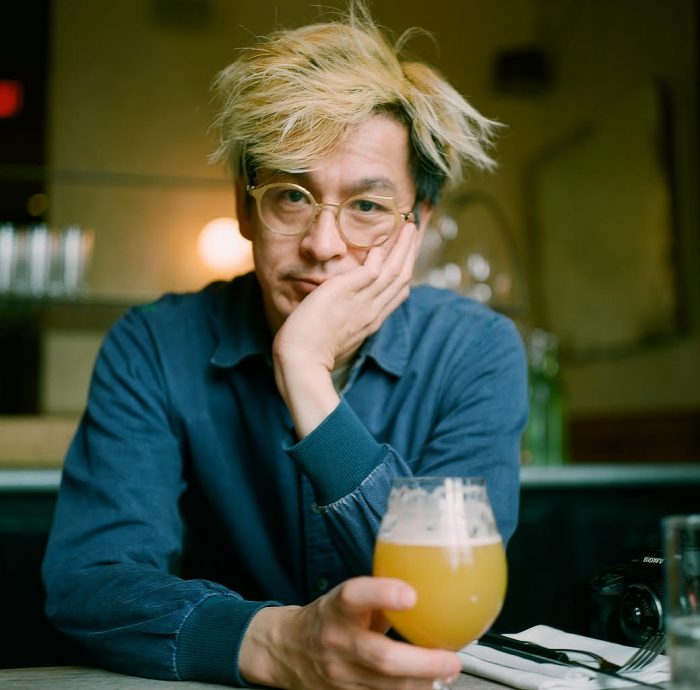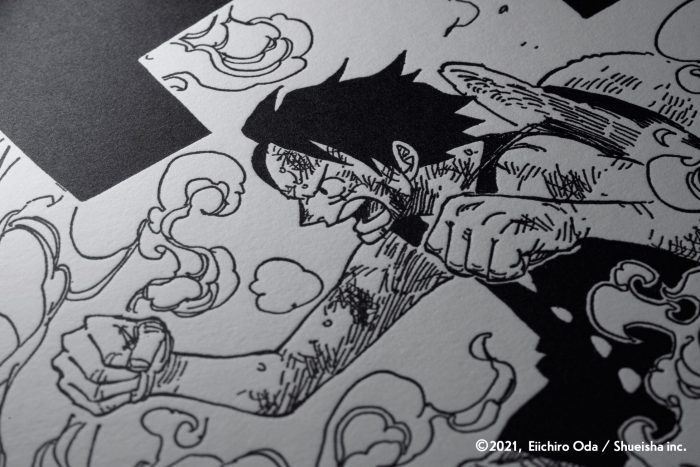
What You Need to Know:
- Manga art is a new initiative to shine a spotlight on the illustrations that manga artists draw for their comics and give them lasting value as “works of art.” These illustrations will be printed on high quality paper and sold, opening a new market and preserving them as works of art to be handed down to the next generation.
- To begin with, Shueisha will be selling manga art of One Piece, Rose of Versailles, and Innocent by lottery.
- ONE PIECE Manga Art - Part of a series of seasonal pictures in a Japanese style. The main character, Luffy, is eating dumplings, and the details of the cherry blossoms are very beautiful.
- The Rose of Versailles Manga Art - A manga series from the early 70s. The original illustrations have deteriorated somewhat, so they have been digitally touched up based on the original publications and Shueisha’s digital archive.
- Innocent Manga Art - Prop blood was used to create the streaky effect in the original illustration. In manga magazine or comics size, it’s easy to miss small details like where the roses are drawing blood or the inner folds of the lace.
- Lottery applications for manga art of Eiichiro Oda’s One Piece, Riyoko Ikeda’s Rose of Versailles, and Shinichi Sakamoto’s Innocent and Innocent Rouge will open today, March 1, 2021.
- MyAnimeList interviewed Mr. Okamoto, who’s in charge of the Manga Art Project.
- For more information on manga art from world famous manga series, please visit: https://mangaart.jp/
Source: MyAnimeList
Interview with Mr. Okamoto (by MyAnimeList)
Q. Why did you decide to begin with art from Eiichiro Oda’s One Piece, Riyoko Ikeda’s Rose of Versailles, and Shinichi Sakamoto’s Innocent and Innocent Rouge?
We chose to begin with three works: One Piece, which is still being serialized and is one of the most popular manga in the world today, Rose of Versailles, which was a global hit from the early 70s, and Innocent, which is a more recent work that was created completely using digital tools.
Although One Piece is currently the best-selling manga series in the world, there are actually many things in the manga that most people don’t know, haven’t seen, or aren’t aware of, so showing them was my main reason for choosing it. On average, Oda-sensei draws 19 pages every month for Shounen Jump, yet he still manages to include an incredible level of detail. His color pages use a wide range of colors and are packed with various elements, yet they come together very well. Few artists are that skilled. I’d say he’s at the peak.
Ikeda-sensei’s Rose of Versailles was a very influential work in the history of Shueisha. It was a major hit when it was serialized in Margaret in 1972-73, sold 2-3 million copies, and as you probably know, received anime and stage play adaptations. It was also one of the first manga to sell well globally.
Although completed in under two years, it is full of highly intricate drawings. I think people are going to be surprised when they see them printed in a larger size.
It’s already possible to see the high-res data for Shinichi Sakamoto’s Innocent and Innocent Rouge, but we chose it due to the high level of detail compared to other manga series. They’re drawn completely with digital tools and have incredible detail for a monthly series.
Whether for manga magazines or comics, the illustrations are greatly reduced for printing. Almost nobody sees Sakamoto-sensei’s drawings in their original size. That’s why, when he sells original illustration collections or displays larger copies at exhibitions, people are always amazed at the detail.
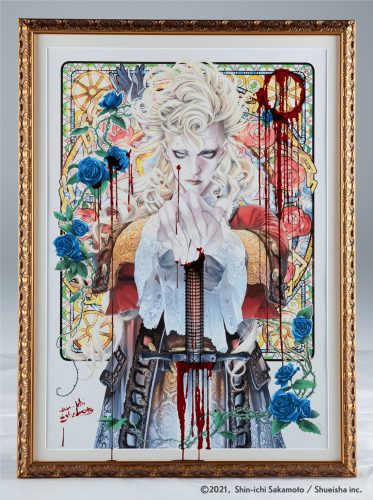
Q. Thank you! Can you tell us what other works will be added in the future?
I’m afraid I can’t reveal that information yet. But I can tell you that we’ll be collaborating with contemporary art galleries to reveal works that will astound and amaze fans. Please look forward to it!
Q. You mentioned creating a market for manga art. How do you see this market developing in the future?
One of the reasons why we decided to expand our business globally is because of the current size of the art market. Although the exact numbers vary depending on the study, it is estimated that the art market in Japan is worth about 359 billion yen (US$3.4 billion). Compared to the global art market’s value of 6.7 trillion yen (US$63.9 billion), this is relatively modest. The domestic digital comics market was about the same size in 2020.
About a decade ago, the market for digital comics was almost non-existent, but in the last 10 years or so, it has grown to equal the size of the art market. In the same way, the market for manga art has the potential to grow rapidly.
More specifically, I think we’ll be able to reach 10 billion in 5 years and 50 billion in 10 years. Of course, these numbers are only realistic if companies other than Shueisha also get into the market.
I’d also like to point out that it isn’t a zero-sum game. Rather than detracting from the existing art market, manga art will be able to grow alongside it. This goes not only for contemporary art, but also for other compatible art forms like photography and crafts.
Q. Who is your target market for this new service?
In Japan, there is a product called “original reproductions,” and I think people who buy these are likely to also take an interest in manga art.
On the other hand, outside of Japan, original reproductions are quite rare, so it’s difficult to pinpoint an exact target market. However, apart from core manga fans, there are many art connoisseurs who are simply interested in artistic expression. I believe that people overseas will be able to appreciate these works without any bias toward them as a “new type of art.”
Also, unlike Japan, many countries have a culture of hanging pictures on walls. I believe there will be people interested in framing their favorite manga art and displaying them in their homes.
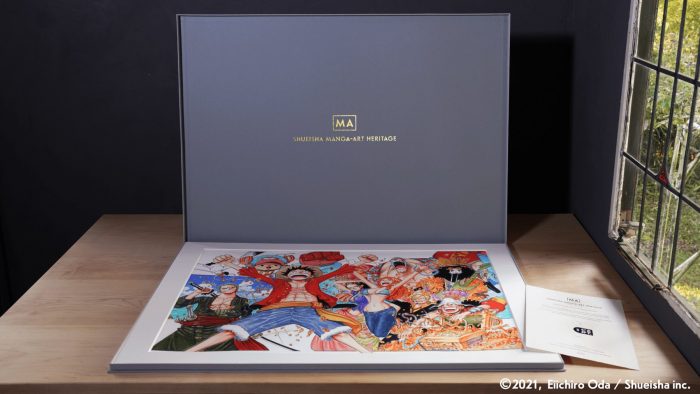
Q. Please tell us how you came up with this new business idea and what motivated you to carry it out.
I belong to the Digital Business Division, and we started running something called CDA (Comic Digital Archive) in 2007. At Shueisha, we publish about 800 volumes of original manga a year, and we currently have over 3 million pages of manga stored.
In recent years, we have been using high-resolution cameras to capture the original color illustrations. Since 2008, we have archived over 10,000 pages worth of high-resolution data. In the process of converting manga into data and storing it, we noticed that there were many drawings that were difficult to reproduce with commercial printers. We’ve been discussing the possibilities internally for several years now, and about one year ago, these ideas finally took shape. The realization of a digital authentication system was also a large factor.
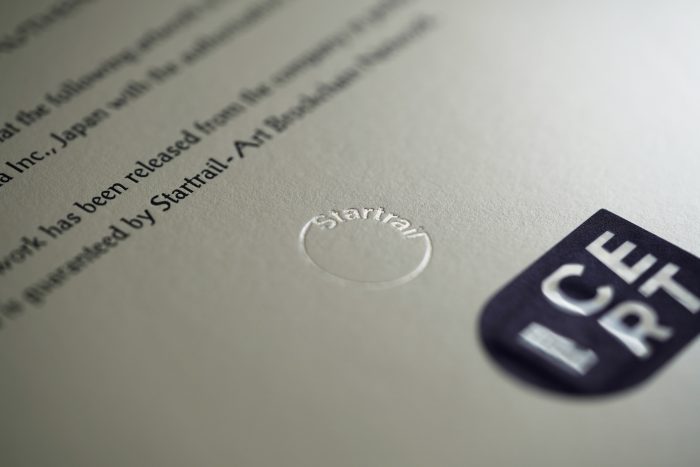
My hope is that this project will be not only a business but also a way of preserving manga from an artistic perspective.
Q. What were some of the difficulties you have faced in this project?
Most of my work is quite fun, but I’d say the most difficult part was creating a distribution channel entirely from scratch.
For comics and e-comics, we already have viable distribution channels in the form of bookstores and manga websites. However, nobody sells manga art yet. This business is completely new, so we needed a completely new distribution channel.
Q. What do you think manga fans will be able to feel through this new art medium?
Things like color, texture, and detail are difficult to convey online, but they’re immediately recognizable in real life. There’s a richness that analog mediums like paper have over digital ones.
For example, there’s this scene where Ace is revived that’s printed on a flatbed press. It’s printed with great force, so the black area here is slightly dented. It’s difficult to understand without actually seeing and touching it, but I think this is a wonderful printing method and a great work of manga art. I’d like us to work on our photos and videos, so that these details can also be conveyed online.
Oil paintings and artworks are very durable, but almost nobody sees manga illustrations in their original form. Rather, they see them in printed comics. The inks used for printing color pages dry quickly, can be applied in layers, and produce beautiful colors, so they have greatly expanded the range of expression in manga. On the other hand, this ink has low light resistance and is prone to discoloration and fading. In other words, manga is not made with durability in mind. So for manga art, I was very concerned about the paper quality and output method.
Ordinary paper is made of pulp, but for the manga art color print series, we’re going to be flatbed printing on Gmund Cotton—100% cotton paper. This is top-quality paper that has never been used for printing regular manga before.
Q. What do you think is the difference between manga as entertainment and manga as art?
What is art, really? I think it’s quite difficult to say. The idea that manga is just entertainment and not art is rather old-fashioned.
Since the days of Marcel Duchamp, it’s been said that anything you put in a museum is art. For example, you could place a toilet seat in a museum and call it “art.” Manga has long been exhibited in museums, so in that sense, I think it’s already an art form.
However, the illustrations aren’t usually collected or displayed. The reason being that the readers seldom see these original illustrations. In other words, they’re just intermediate products used in the printing process.
So, the goal of this endeavor is to treat the original illustrations like works of art, similar to negative films in photography, and to make high-quality prints.
Even if it doesn’t fit into the traditional definition of “art,” I’d like to make it into something that is seen by more people.
Q. How did the artists react when you decided to release these three works as manga art?
Oda-sensei said, “I think you should make it bigger.” Even original reproductions, which are the same size as the originals, are too small to see clearly. Bigger is better. That’s exactly the direction we’re going in for the overseas market. However, since he’s such a prolific artist, I had a hard time deciding which illustrations to use and in what order. I ended up choosing the ones that were easiest to understand.
Ikeda-sensei isn’t one to look back on the past very often. However, both her and Ikeda Productions have taken an interest and are working with us to carry out this project.
Sakamoto-sensei was especially delighted. During a TV special, Naoki Urasawa saw his work and commented, “Why are you drawing in so much detail that won’t be printed? Are you going to release them as works of art?” That’s exactly what’s going to happen! Sakamoto-sensei draws especially large for a manga artist. However, he works completely digitally, and tablet screens are generally too small to see all the details, so seeing his own work in such a large size feels novel for him too.
Interviewee
Mr. Masashi Okamoto
Business Manager/Director
Digital Business Division
After working for a women’s magazine and a women’s magazine portal site, he began participating in the digitalization of manga production. He is responsible for planning and implementing Comics Digital Archives, a database of major manga titles published by Shueisha. He has also helped to digitalize the production environment for manga magazines such as Shounen Jump. After transferring to the Digital Business Division, he launched Manga Factory and SSDB (Shueisha General Database).
